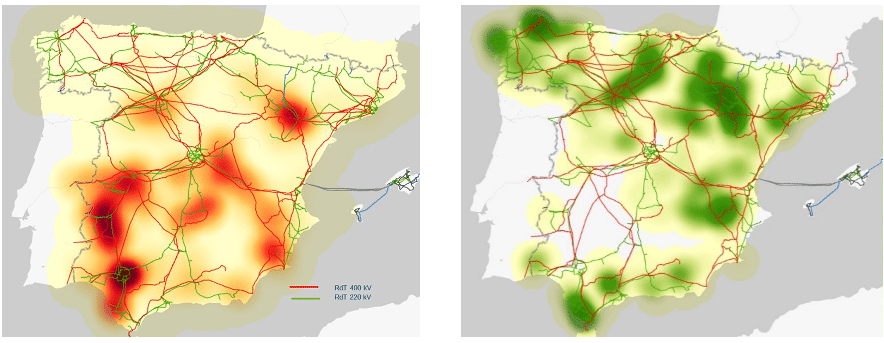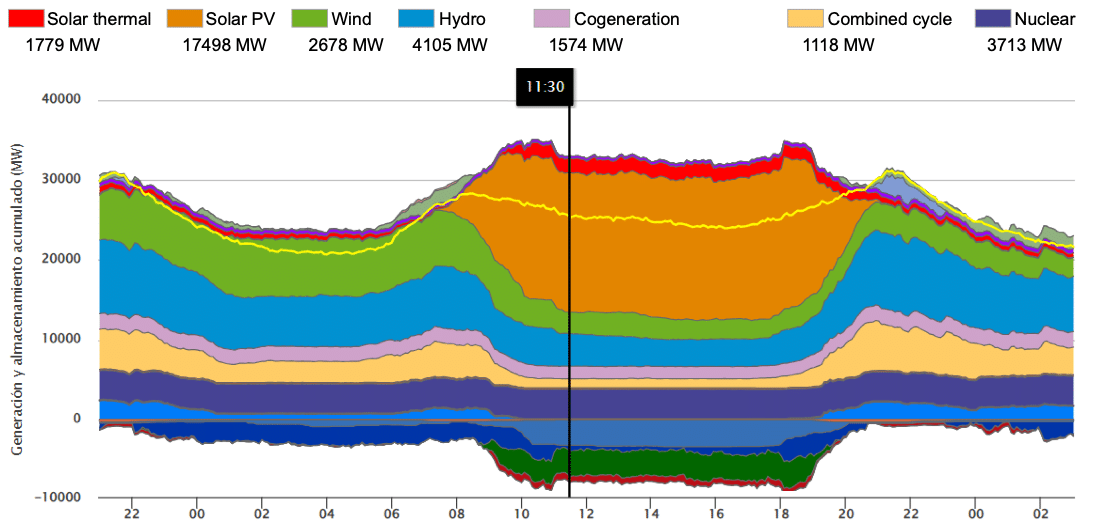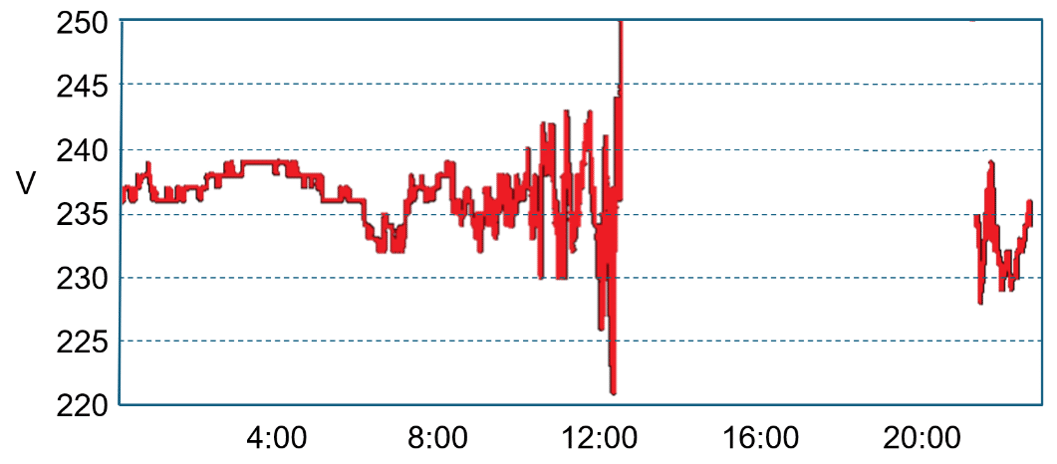Let the blackout enlighten the way
Carlos Batlle (Professor at the Institute for Research in Technology of Comillas Pontifical University and Part-time Professor at the FSR) analyses the complex problem of the blackout in Spain and the unprecedented technical, economic, social and geopolitical challenges it poses.
In this day and age, it seems that what is happening can only be explained by militancy at the extremes. The detractors of the still coach of Real Madrid, Carlo Ancelotti, after years of arguing that his team won everything in spite of him, and thanks to the “magical” physical trainer Antonio Pintus and the mystique of the Bernabeu stadium, can finally raise their voices this year; on the other front, his supporters ask about Pintus and argue injuries and imbalances in the squad design. It is not easy to find a Real Madrid fan arguing that maybe it is neither one thing nor the other, but a little bit of everything: successes and failures, with uncertainties that make that, as Woody Allen illustrated in his movie “Match Point”, after touching the net, the ball sometimes falls on one side and sometimes on the other, and everything changes.
The future planning and day-to-day operation of the electricity system, critical to our economy welfare, is increasingly subject to similar dogmatic dynamics. But the reality is that we are facing a very complex problem, with unprecedented technical, economic, social and geopolitical challenges and issues. In this context, there seems to be less and less room for doubt and analysis, and more and more room for hasty, incomplete, simplistic and, above all, partisan judgments, from one side, the other and beyond. The fact, if it should be clear, even if it is very uncomfortable to remember it, is that no one is even close to being right (interests, many; certainties, very few).
Let this digression serve as an introduction to the following attempt to answer some of the questions that have been on the table for the past week. But before we get into it, in order to save the reader’s time, allow us a small spoiler:
Although it may be fascinating for some, and necessary for others, we think that the race to find the culprits is worse than a waste of time. Basically because no one is: neither the sun, nor nuclear power, nor Red Electrica (the Spanish transmission system operator), nor the electricity companies, nor France.
In any case, it is worth exploring our society’s share of responsibility, which assumes that maintaining the electricity supply in the current context is a trivial task, risk-free and, of course, much cheaper than the price paid, so that any failure is undoubtedly due to someone’s disinterest (or worse, illegitimate interest), inaction or incompetence.
The conclusion that we would like to propose, therefore, would be to begin by becoming aware that it is necessary, not so expensive and, if not done badly, very profitable to invest. And in order to solve the immediate question “in what and how much”, we should focus our efforts on freeing ourselves from dogmas, filtering out the particular economic interests of some and others, and studying and trying to quantify with rigor what is the best way to do it.
The (good) Spanish example
No two electrical systems are the same, or even similar. The Spanish system (although it would almost be more appropriate to speak of the Iberian system) is specially particular. The transmission and distribution grids of both countries are very well developed. This has facilitated the integration of an unprecedented amount of renewable resources. In relative terms (renewable production in relation to peak demand), to cite two cases that are world references, twice as much as California and very close to Germany, with the added bonus that these two electricity systems are infinitely more connected to the systems of their neighboring states.
The Iberian Peninsula is also an electrical peninsula. On paper, this should not necessarily be the case, as interconnection capacity could be significantly increased. Without going into the reasons, this means that the neighboring systems (France and Morocco) can help to cope with moderate but not extreme eventualities. Another peculiarity is that, as shown in the figures below, the development of the networks has facilitated the installation of renewable resources throughout the Iberian Peninsula. Although this is undoubtedly positive from other points of view (territorial balance), it poses relevant technical challenges because, unlike other systems where generation tends to be concentrated in certain places, anything can happen almost anywhere. And to complete the picture, in addition to the more than 60 GW of solar and wind farms, there are more than 7 GW of behind-the-meter rooftop solar panels. The latter is a growing generation capacity and not at all irrelevant, especially from the point of view of system stability. So far, neither Red Eléctrica nor the distribution companies can “see” it, let alone manage it (in fact, the 7GW mentioned above is an estimate, but impossible to confirm due to the lack of records).

Figure 1. Geographical distribution of solar (left) and wind power plants (right)
Even 15 years ago, when installed wind and solar capacity was a third of what it is today, many experts argued that the electricity system had reached its limit and could not go beyond it. Since then, demand has not grown significantly, and the penetration of renewables has tripled, and not gradually (installed solar capacity went from 5 GW in 2018 to more than 35 GW in 2024, including behind-the-meter solar PV). The system has undergone major shocks: the snowstorm Filomena, which left more than 7 million inhabitants indoors for more than 48 hours, the COVID, a galloping energy crisis that lasted almost two years, and even the recent torrential floods that devastated the province of Valencia. Despite this, both Red Eléctrica and the electricity distribution companies that manage the low-voltage networks have achieved levels of continuity of supply that are well above the average of their European counterparts, as shown, for example, in the reports of the Council of European Energy Regulators.
After the blackout of last Monday the 28th, there are obviously a lot of questions: obviously it is important to know what happened and why. And, of course, what lessons we can learn for the future. Because beyond the casuistry that triggered the collapse, what is really important is whether there is a problem at the root of the current design that, if not corrected, will continue to keep the electricity system in an unjustified situation of vulnerability.
The technical dimension, what and why did it happen?
The supply of electricity is based on a series of electrical engineering laws of great complexity, even for engineering graduates. Roughly speaking, the energy that flows through the networks as a result of the interaction between generation (production) and demand (consumption) has two components: one called active power, the energy our electrical equipment actually needs, and another, which can be considered almost as a “side effect”, called reactive power.
The stability of the system is fundamentally based on the control of these two components. First, the active energy must always be in balance, i.e. what is consumed must be equal to what is produced at almost every moment. The indicator that system operators use to maintain this balance is frequency measurement (50 hertz in Europe, 60 hertz in the United States). If, at a given moment, the consumption in the system as a whole is lower than expected, the frequency rises above the threshold, indicating that it is necessary to reduce generation (and vice versa). If this imbalance is not restored very quickly, the system collapses. The factor that gives operators a few seconds to react is called system inertia. This inertia can come from generating units with large rolling masses (motor/generator set), or from batteries equipped with special controls, or from synchronous compensators, mentioned later.
At the same time, the grid operator has to control the mysterious reactive power. Analogous to the previous case, when a significant imbalance occurs at any point in the network, the voltages reach unbearable levels for the electrical equipment, which automatically shuts down to protect itself. Later we attempt to explain in some detail how a system operator can control reactive power and voltage levels.
Among other things, perhaps the most important difference between frequency (active power) and voltage (reactive power) control is that the former can be addressed from anywhere in the system, while the latter, being a local problem, can only be solved with a nearby resource. In other words, a voltage problem in the southeast of the country (e.g. Almeria) cannot be solved by a generator (or battery or synchronous compensator) located in the northwest (e.g. Galicia).
As we try to explain below, with the public data available and the diagnosis we have been able to develop, and with the necessary caution, our analysis leads us to deduce that the origin, the trigger of the problem of last Monday, April 28th, was not a problem of frequency control (due to lack of inertia), but of voltage control.
At times in the morning when renewable energy production (distributed throughout the territory) starts, all the lines in the system, especially those with the highest capacity and operating at the highest voltage, 400 kilovolts, must be coupled to allow the injection of all this growing energy. In spring, like last Monday 28, consumption is relatively low. Under these circumstances, a high-voltage line, carrying little load, generates a lot of reactive power, a phenomenon that, in large quantities, is harmful to the stability of the system.
The immediate consequence is a progressive increase in voltage and its oscillation, which needs to be mitigated. In principle, the system operator could act on several control elements. The main ones can be divided into three categories:
- Opening lines. The transmission system is highly meshed, which means that when consumption is low, electric power flows can take different paths. In principle, when consumption is low, some lines can be open; less circuits, more loaded, less reactive power. This strategy is usually applied at night, when generation is more concentrated (there is no solar production, much more dispersed). In the morning, however, it is not a valid resource because, in addition to its complexity, it would mean shutting down many generation facilities.
- Activation of specific voltage control equipment: reactances or synchronous compensators. Red Electrica currently has a few dozen of the former. To rely exclusively on this solution, several hundred would be needed.[1] In various public and less public fora, Red Electrica has stated that it has been trying for some time to increase the number of reactances in the grid, but that it has encountered obstacles of all kinds.
For the power systems of the Canary and Balearic islands, the solution of using new synchronous compensators is already planned. Another alternative consists of taking advantage of the alternators of the thermal plants as they are shut down to, at low cost, convert them into synchronous compensators. The solution is to maintain the group without the capacity to produce active power, but with great capacity and flexibility to generate and absorb reactive power. Since the inertia of the generator is maintained as in the previous generation mode, its contribution to the frequency control is also maintained. This solution is part of the reconversion process of the Andorra coal-fired power plant in the province of Teruel, carried out by Endesa, where the alternator of one of the 350-MW units will be used as a synchronous compensator.
Another alternative, not yet available in Spain, is the installation of batteries that allow a practically instantaneous response, supplying or absorbing active and reactive power to stabilize the frequency and keep the voltage within safe limits. The paradigmatic example of this solution are the batteries installed in South Australia since 2017. Also, if in the future the expected development of data centers materializes, it will undoubtedly be possible to count on their backup generators to contribute very effectively.
3. Absorption of reactive power with generators, mainly hydroelectric, combined cycle gas and nuclear (currently the Spanish system has 24 GW of combined cycle and 7 GW of nuclear installed). In the so-called ancillary services markets, in this case the ones devoted to “solve technical constraints”, Red Eléctrica can contract generating units that, because they are more expensive than others, have not committed the production in the day-ahead market (pool or spot market in jargon). The idea is to schedule these generators, in principle at their minimum production level (the so-called “technical minimum or minimum load”, somehow comparable to the “dead point” of a car engine). The aim is to have a larger number of coupled (started) plants at different locations in the grid, so that reactive power can be managed wherever it is needed.
To provide the system with this service, combined cycle gas plants are more effective than nuclear ones. First because the overvoltage problems are more “local” and those smaller plants are more distributed throughout the grid, and second, because they have a lower technical minimum (they can be on producing at low levels). A nuclear plant can operate at 50% of its maximum capacity, while a combined cycle plant can easily operate at 30%. Hydropower plants can in principle provide this service, but they are usually located in remote places, which makes their use for this purpose infrequent.
The conclusion is that at the present time, the main way that Red Electrica has at its disposal to control reactive power is to correct the so-called economic dispatch previously determined, in accordance with the provisions of the so-called Operating Procedure 3.2. Generation plants with a lower production cost are replaced by other, more expensive ones, but necessary to be able to manage the reactive power balance in case of need.
This is easy to illustrate graphically. The following figure shows the resulting hourly prices in the day-ahead market on April 23. The result of the market clearing, in addition to the prices, determines which groups, having bid the cheapest energy, would in principle be expected to produce on Thursday 24. As can be seen, the resulting prices for the Spanish node from 11:00 to 18:00 were zero. These prices reflected that the expected renewable generation capacity for the day after (solar and wind, at zero cost) exceeded the estimated demand for those hours. Therefore, in principle, combined cycle was initially not scheduled, since its production would mean the consumption of gas, at a cost obviously greater than zero.

Figure 2. Hourly prices cleared in the day-ahead market for Thursday, April 24 (www.omie.es).
However, if in the following figure we look at the dispatch that finally took place on Thursday 24, we can see that in those afternoon hours ,combined cycle and nuclear plants were scheduled. At 11:30am, 1118 MW were dispatched; assuming that this production corresponded to plants operating close to their technical minimum, it could be five or six plants.

Figure 3. Power generation at 11:30 on Thursday, April 24.[2]
On Monday 28, around 10:30am, demand was relatively low (around 24GW) and solar production was ramping up at over 4GW/hr. The voltage started to rise and oscillate. The figure shows the voltage levels and oscillations measured at a consumption point during that day.

Figure 4. Metered voltage at a consumption point on Monday, April 28.
The figure below, based on information provided by Red Electrica on its website, shows the scheduled generation in the moments before the black out.

Figure 5. Power generation at 11:30 on Monday, April 28.
As can be seen, the dispatch was not very different from the previous Thursday, a day with similar characteristics. At 11:30am, an hour before the collapse, about 1000 MW were being produced by combined cycle plants and just over 3000 MW by nuclear plants.
What was unusual was that on this occasion, for reasons yet to be determined, the contracted balancing capacity was not sufficient to correct this oscillation. The system operator tried to schedule new groups as a matter of urgency, but there was no time to sustain the system. The voltages reached unacceptable limits for the generating units, causing a cascade of shutdowns (starting with the photovoltaic farms, but immediately followed by all the others) and of the interconnection with France, leading to a total black out.
Can it be said that Red Electrica failed to do its job?
There is no basis now, nor will there be, to claim that—or to claim the opposite. Let us start with a classic Spanish proverb: “a toro pasado, todos somos Manolete” (a Spanish version of Hindsight is 20/20[3]). And if someone can argue to have been warning for some time that something like this was going to happen, it took 15 years, not bad.
It is undeniable that if Red Electrica had contracted more reserves the day before (for example, by scheduling more combined-cycle or even additional nuclear units), it could have managed the situation better. Easy to say with the benefit of hindsight. The immediate question is why they did not. And the answer is not simple. Was it a miscalculation, or was the probability of what happened on Monday so low that the cost of contracting enough reserves to cope with something like that was not justified? The former is a possibility that cannot be ruled out, but the latter should not be ignored, because it is often forgotten that scheduling up reserves is by no means for free (it would have entailed contracting that extra amount not just for that day, but for every single day, with the corresponding extra cost).
Until April 28, Red Electrica had ensured electricity supply in a system internationally recognized as one of the most complex on the planet: an (energy) peninsula with renewable penetration levels among the highest in the world. And it has done so under enormous external pressure from multiple fronts not to spend more than needed (how much is this?): some pushing to maximize the use of renewable generation (contracting thermal reserves on high-renewable days implies disconnecting solar or wind farms), and others directly demanding maximum cost efficiency. According to the Spanish energy regulatory authority, the CNMC, in 2023 the extra cost to consumers from technical restrictions related to voltage control exceeded €600 million, compared to €306 million in 2020.
After the incident, Pedro Sánchez, the Prime Minister stated that “this can never happen again.” With its available resources, Red Electrica may be very close to ensuring that (nothing in life is ever 100% guaranteed). In the absence of previously mentioned solutions (reactances, compensators, or batteries), the option today is to schedule a high number of thermal (gas and nuclear) and hydro generation units under “technical restrictions.” However, we should consider whether the cost of ensuring it never happens again would be justified.
Lessons for the future and for other power systems
An intrinsic characteristic of the Spanish character, not easily found in other countries and cultures, is an irrepressible tendency to be self-critical: to harshly and openly point out Spanish flaws and mistakes, much more than successes. So before suggesting strategies for improvement, it is important not to lose focus. In the last two decades, the Spanish system has undergone an unprecedented transformation. Electricity companies and institutions have made pioneering and courageous decisions. After Monday’s failure, it is easy to be critical and frustrated. But it would be fair to recognize that the work done has been extraordinary. And from that starting point, we can analyze the situation and address the challenges ahead, knowing that decisions will be made that, over time, may be seen as improvements.
The incident comes at a particularly critical moment. System security has not, until now, been a major factor in energy planning discussions, centered on the future configuration of Spain’s generation mix. It’s hard to know whether the future lies in more sun, more wind, more nuclear, more batteries, more transmission lines, more reactances, more electrolyzers, more electric vehicles, or more of everything. That debate blends different perspectives and radical interests—economic, social, and political.
The controversy after the blackout is the clearest illustration of the state of worldwide discussion around the future expansion of electricity systems. The necessary analysis was delayed in favor of a blame game: some pointed to the sun, others to nuclear, others to the system operator, and still others to energy policy.
Neither of the first two can be blamed. Blaming the sun for the blackout is like blaming the sun for skin cancer: if someone wants to expose their body to the sun for whatever reason, they need to invest in sunscreen. Nor does it make sense to blame nuclear power generation for the “automatically shutting down,” because in such circumstances – when voltage or frequency exceeds permissible ranges – all generation shuts down, without exception.
What is striking, however, is that no one has pointed the finger of blame at us, the citizens, the consumers. The blackout was a clear demonstration of the value of electricity supply. Unlike the frequent blackouts we were used to three or four decades ago (on cold days, often at night, particularly during bad weather days), this one occurred on a sunny day, with extremely pleasant temperatures; but it revealed a new trauma: cell phones stopped working. Some citizens who could not take the subway home did not know how to get back, which public bus they could take or how to walk home because they could not access Google Maps.
The average Spanish family pays around €50-60 per month for electricity, less than it costs to fill up a car once. Certainly less than the monthly cost of a subscription to the UEFA Champions League. But every time the electricity bill rises slightly, there is widespread outrage.
Perhaps we should start by understanding that the electricity system is central to our economic development. And that if we are to make the most of our limited autochthonous resources by promoting renewable energy, we must accept that it cannot be free. Investment is necessary.
Of course, it is vital to focus on the truly vulnerable consumers – those who cannot afford to pay for their basic energy needs. But the rest of us, the vast majority, need to come to terms with the true value and cost of electricity. And, of course, as in any other sector, there must be a strong commitment to market and customer service oversight, to ensure that the prices paid and the quality of service received are adequate.
To this end, the institutions —in particular the National Regulatory Authorities, should be given greater autonomy and broader powers than they currently have, as well as significantly more and better resources. This would enable them, on the one hand, to meet current and future regulatory challenges and properly monitor markets and the resulting prices, and, on the other hand, to support the difficult decision-making processes that will shape the future of electricity systems —minimizing the risk of decisions that could unnecessarily compromise the future performance of a sector that is central to our economy.
The challenge, without a doubt, is to determine the best way to develop the electricity system to meet needs for at least the next 30 years. Let us start from the premise that this is a problem filled with so much uncertainty that, by definition—unless someone has a crystal ball—there is no optimal solution. Therefore, the first step must be to define and commit to a consistent energy policy line, aiming to achieve the desired levels of energy independence, decarbonization, and supply security. This is a vital roadmap for the any country’s economy, which must look at least 20 years ahead, and therefore, in a responsible move, should be agreed upon by the broadest possible political spectrum. And for that, partisanship and dogmatism are no help.
Once that roadmap is defined, it is crucial to provide network operators with the means to operate under optimal safety conditions, and to offer potential investors in generation and control equipment the regulatory stability needed to ensure balanced financing costs.
[1] The “Report of the National Regulatory Authority on the proposed modification of certain aspects of the 2021-2026 Electric Transmission System Development Plan” reads as follows
“According to (…) the Transmission System Development Plan 2021-2026, the installation of reactances in the transmission system was the most efficient solution to this problem, requiring a very low investment cost and presenting a payback of only 8 months. It was also pointed out that if the proposed reactances had already been in operation in 2019, it would have been possible to reduce by 81% the cost overrun of technical restrictions for voltage control in that year. (…) the value of the investment of the necessary reactances in an analyzed area – area with usual voltage problems and higher costs of solving the technical restrictions in 2023 – would have been almost 8 times lower than the cost that the technical constraints for voltage control have meant, assuming the useful life of the reactance of about 40 years”.
[2] https://demanda.ree.es/visiona/peninsula/demandaau/acumulada/2025-04-24
[3] The original refers to famous bullfighter Manolete, implying everyone thinks they could have done better once the danger has passed.






